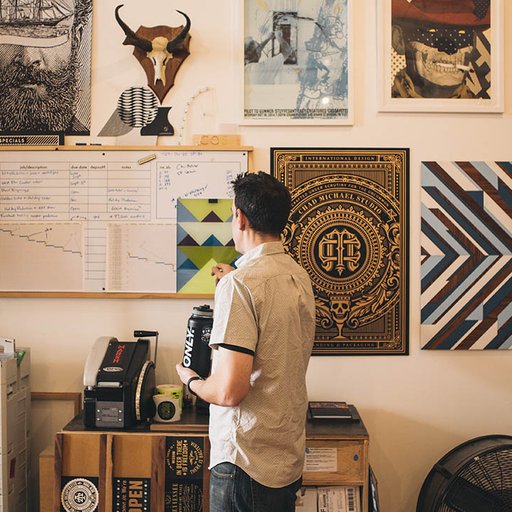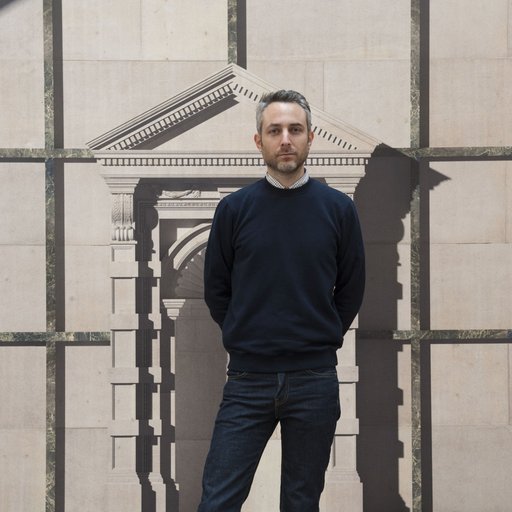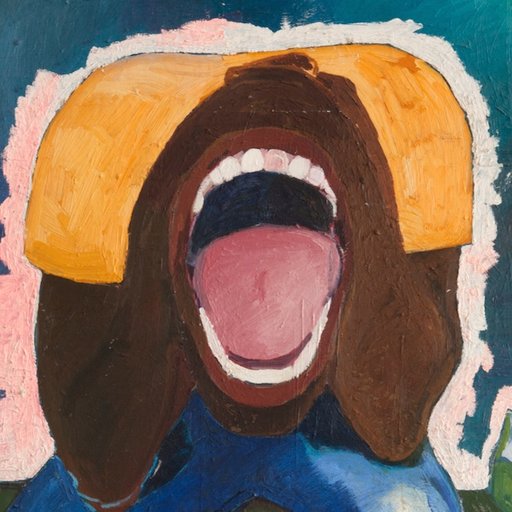The studio visit is one of the most intimate, sensitive, and otherwise emotionally fraught encounters in the art world, when an artist welcomes a significant visitor—a collector, curator, journalist, or the like—into their creative sanctum sanctorum and both sides try, desperately, not to screw it up. It's like a tender first date that could end in either intellectual romance, or rejection.
Back in September, Artspace provided a guide for artists on how to nail the studio-visit challenge. But artists are hardly the only ones who need to put their best foot forward in the encounter. Here, we’ve asked artists (and some curators and advisors) about the annoying things that visitors do during studio visits, and what advice they’d give to people preparing for their next meeting with an artist. If you’re a curator, collector, advisor, or dealer, do yourself a favor and read this guide—your artist-hosts will thank you for it.
Tip #1: Do Your Homework
“My only pet peeve is when people show up for a studio visit knowing absolutely nothing about my work. And that happens often enough.” – Katja Novitskova, Amsterdam-based artist represented by Kraupa-Tuskany Zeidler Gallery in Berlin
“Artists complain that they have critics coming to their studios without knowing anything about their work. It’s strange that someone would want to visit a studio of someone they haven’t learned anything about. One should know the artist’s work before they go to the studio. Artists can do whatever they want. We’re the ones who need to be prepared—and on time!” – Florence Derieux, curator of American art at Centre Pompidou Foundation and curator-at-large at Centre Pompidou
“Bring you A-game as a viewer. Hop online and do some research. I would never dream of showing up to a studio visit unprimed.” – Tara Downs, owner of Tomorrow Gallery in New York
“Questions that involve asking artists about who shows their work, or where they have exhibited, or how much their work sells for, can be easily answered by researching online before the visit. You don't have to be able to write a report on the artist, but basic facts that can be found on an artist's website and CV help facilitate more interesting conversation.” – Megan Green, collector and occasional Google HQ curator based in New York
Tip #2: Don’t Compare Artists to Other Artists
“My biggest pet peeve is when they talk obsessively about another artist. A gallerist that references other artists is okay, but to just talk about another one for no reason is annoying. Namedropping for the sake of it is also in super bad taste. I don’t care if you are friends with Hans Ulrich Obrist or if you went to X dinner.” – Debora Delmar, artist represented by DUVE Berlin
“Be careful when comparing the artist to other artists—sometimes artists can be prickly about that.” – Green, collector
Tip#3: Be Clear About Your Intentions
Tip #4: It’s Okay to Talk About Subjects Other Than Art…
“Art is complicated and sometimes unpacks/unravels slowly. Look around and notice the idiosyncrasies of my environment that are both the product of and inform my work. Ask about the music playing, where I got the coffee cup you're drinking from, etc. Everything is interrelated. Sometimes in life, the best way to have a conversation about philosophy is to ask a question about sports. Talk. We share a common purpose.
“The objects/gestures that artists produce, which you might eventually exhibit or buy, are just the tip of the iceberg of a larger framework by which each artist approaches life. I want to talk about that approach to life, the larger framework—it is not only more stimulating, but will create a context for better understanding the individual objects I've made.” – Andrew Birk,Mexico City-based artist represented by Anonymous Gallery
"The best visits use the work as an opportunity to expand the conversation in a lot of different directions beyond formal specifics. The subjects that come up may or may not directly address the work, but recording where the conversation goes is useful feedback. My last visit was particularly exciting; all of these auxiliary topics came up and the conversation was really lively. The hour seemed to go by in minutes." – Truax, artist
Tip #5: … As Long As You Don’t Just Talk About Yourself
"I had one guy way back in the day come to my studio and talk to me about himself and the shows/artists he had worked with the entire time. I suppose my pet peeve would be when studio visits aren’t about the work being looked at. A good visit, conversely, is where someone is generous with their time and really wants to get into your head and hear about your ideas and see your world. Those are always the best. With art being something that (should be) somewhat complicated, it's really great when someone puts in the time/effort to wrap their head around what you’re doing." – Ryan Lauderdale, New York-based artist represented by KANSAS Gallery
Tip #6: Ask Questions AND Listen to the Answers
"I remember speaking to a Berlin artist who had a terrible studio visit with a New York gallerist. If you’re an out-of-town gallerist doing 15 studio visits in one short visit, you’re not engaging with anybody’s practice, you’re entering the studio in a really ungenerous fashion as if to say 'Please explicate your work to me.' That’s not a productive conversation. You’re implying that you’re there to be entertained rather than to have a productive dialogue where you’re actually riffing off of ideas and asking questions about the aritist’s practice. Be prepared, be engaged, have questions. Ask about their practice, ask why these particular choices—you can be antagonistic, slightly. A studio visit shouldn’t just be listening, and absorption, and 'Thank you very much.' It should give the artist insight and knowledge on their work." - Downs, Tomorrow Gallery
"Ask artists who they look at, and how their work relates to the history of that tradition (representation, abstraction, etc.). The artist’s answer may help a collector or gallerist discern sincerity and intelligence—or lack thereof—in the maker." – Jason Stopa, New York-based artist
"Listening is important. One of my pet peeves is when an artist has said something to a group and then someone in the group who wasn't listening asks that exact question moments later. As in any scenario, pay attention and don't get lost in designing your questions." –Green, collector
"I once had a collector visiting who started out by answering an incoming call while I was explaining the most intimate details of a painting he has previously acquired. While he was on the phone I thought: It doesn’t get much worse than this. But then he stayed for another two hours, providing me with tremendous feedback, for which I’m now feeling very grateful. So, I guess my point is: you never know." – Mikkel Carl, independent curator and artist represented by Last Resort in Copenhagen
Tip #7: A Studio Isn’t a Gallery—and an Artist’s Practice Isn’t Limited to the Studio
"People have a hard time seeing things in progress, especially in terms of sculpture. A studio isn’t a gallery. But I don’t know if that is anything anyone can do anything about." – Lauderdale, artist
"It’s important for collectors and artists to know that studio visits can happen at all levels. A studio visit could be having coffee and conversation with someone outside of the studio. Artists are always at different points of production; sometimes the studio is empty, sometimes it’s full, sometimes you’re Skyping with someone halfway around the world so you’re not actually seeing things. Multiple points of contacts are also really nice. I find that sometimes during a studio visit it’s best to stop, think, and take away from the conversation, and return to it as well because more questions arise after." – Downs, Tomorrow Gallery
"Remember to consider scale. Not just physical scale, but conceptual, social, and collaborative scale. Many artists are engaged in social and/or interdisciplinary modes, and what you see in their studio is often just a fraction of their practice, or even just models for much larger scale projects. Do not get distracted by what’s in front of you. Use it simply as a clue, and ask larger questions. Don’t get overly seduced by materiality; materials are a necessity—and often a by-product—of economy or a metaphor for a larger idea." – Leah Dixon, artist and co-owner of Beverly's in New York
Tip #8: But You Should Respect the Space as If It Were a Gallery
"On a practical level, it's important to respect the artist’s space. Be helpful if the artist needs to move large works, but never touch anything that you have not been invited to handle. I avoid photography, but if you are compelled, always ask permission." – Elizabeth Pergam, Faculty at Sotheby's Institute of Art
Tip #9: You Aren’t Administering a Quiz
"We have to adapt to artists and not the other way around. I think we should make sure that artists can be the way they want rather than try to format them. The younger generation of artists especially have gone to art school and they’ve been forced to write and talk about their work. But artists chose art, they didn’t choose literature. Their way of communicating is by making art." – Derieux, Centre Pompidou
"While some of us are better than others at doing a sales pitch, artists are fundamentally not sales people. We are thinkers and makers. During studio visits, there is pressure to perform and impress that can sometimes distract or impede from a concise, honest flow of ideas. Breaking down the hierarchy of power between an artist and a visitor is one way to relieve this tension. It is both of our jobs to find an intellectual middle ground. You are not my boss, this is not a job interview, this is not a blind date, this is not a cold call or a sales pitch. A studio visit is none of these things and potentially so much more. I am looking to work with people who are on board with my ideas and who I am as a person, and inversely, I look for the same in you. We are making an investment in each others lives and dreams and ambitions. Then, and only then, is there room to breach the subject of business." – Birk, artist
Tip #9: Don’t Be Late!
"As an artist, my least favorite thing is when you’ve prepared for a visit, cleaned up, and are waiting when they tell you they are running super late or not coming at the last minute. Insanely rude…" – Brian Willmont, New York-based artist and owner of Greenpoint Terminal Gallery
[related-works-module]
























